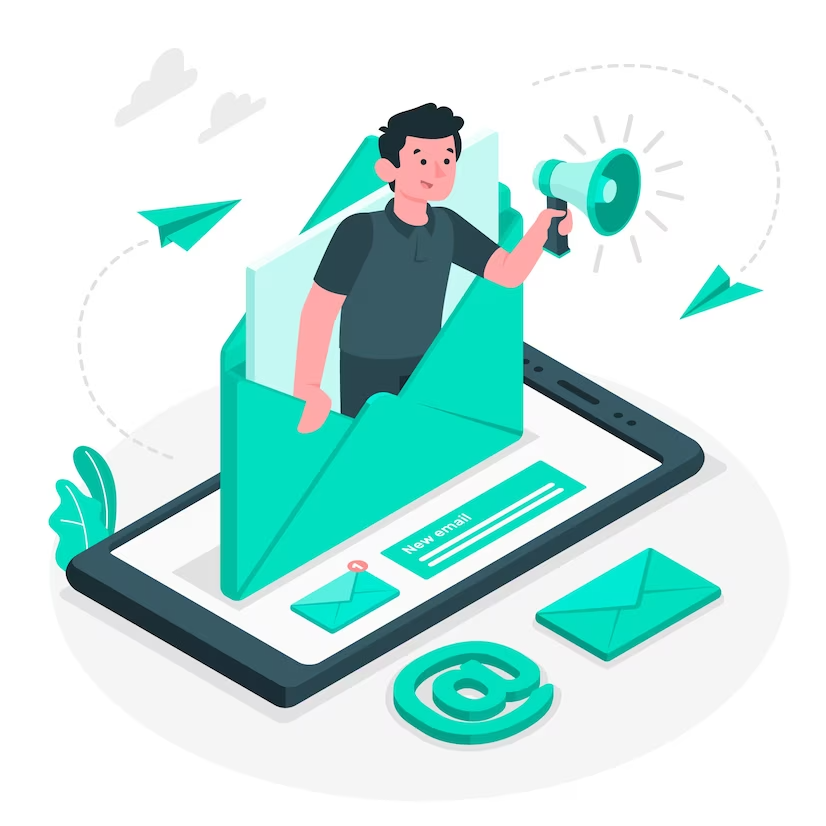The Evolution of Email Marketing: Strategies for Success in 2024

Email marketing has come a long way from simple text-based newsletters to sophisticated campaigns that deliver personalized, targeted messages to the right audience at the right time. In 2024, amidst a rapidly evolving digital landscape, email marketing remains a powerful tool for businesses to engage customers, drive conversions, and build lasting relationships. In this blog post, we’ll explore the latest trends, strategies, and best practices for achieving success in email marketing in the current year.
Personalization and Segmentation:
Personalization is no longer just a buzzword but a necessity in email marketing. Today’s consumers expect tailored content that speaks to their individual needs and preferences. Segment your email lists based on demographics, behavior, purchase history, and engagement levels to deliver highly relevant messages. Leverage dynamic content, personalized subject lines, and product recommendations to capture attention and drive conversions. By understanding your audience’s preferences and delivering value-added content, you can enhance engagement and build customer loyalty.
Interactive and Visual Content:
In the era of visual storytelling, incorporating interactive and visually appealing content in your emails can significantly enhance engagement rates. Experiment with interactive elements such as polls, quizzes, sliders, and GIFs to create interactive experiences that captivate recipients and encourage interaction. Use compelling visuals, including high-quality images, videos, and infographics, to convey your message effectively and leave a lasting impression. A visually appealing email design not only attracts attention but also reinforces your brand identity and enhances the overall user experience.
Automation and Triggered Campaigns:
Automation is a game-changer in email marketing, allowing businesses to deliver timely and relevant messages without manual intervention. Set up automated workflows triggered by user actions such as sign-ups, purchases, abandoned carts, and birthdays to nurture leads and drive conversions. Utilize drip campaigns, welcome series, re-engagement campaigns, and transactional emails to deliver targeted messages at each stage of the customer journey. Leverage behavioral data and predictive analytics to personalize automation workflows and optimize campaign performance over time.
Mobile Optimization:
With the majority of email opens occurring on mobile devices, optimizing your emails for mobile responsiveness is non-negotiable. Ensure that your email templates are mobile-friendly, with clear, concise content and clickable CTAs (calls to action) that are easy to interact with on smaller screens. Test your emails across various devices and email clients to ensure consistent rendering and a seamless user experience. Consider using responsive design techniques, scalable images, and mobile-first strategies to cater to the growing mobile audience effectively.
Compliance and Privacy:
In an era of heightened data privacy concerns, maintaining compliance with regulations such as GDPR, CCPA, and CAN-SPAM Act is essential for building trust and protecting customer data. Obtain explicit consent from subscribers, provide transparent privacy policies, and offer options for subscribers to manage their preferences and unsubscribe if desired. Ensure that your email marketing practices adhere to industry standards and best practices to avoid penalties and maintain a positive reputation among subscribers and regulators alike.
Testing and Optimization:
Continuous testing and optimization are key to improving the effectiveness of your email marketing campaigns. A/B test different elements such as subject lines, CTAs, email copy, visuals, and send times to identify what resonates best with your audience. Monitor key metrics such as open rates, click-through rates, conversion rates, and ROI to measure campaign performance and identify areas for improvement. Use data-driven insights to refine your strategies, iterate on successful tactics, and experiment with new approaches to maximize results.
Integration with Other Marketing Channels:
Email marketing does not operate in isolation but should be integrated seamlessly with other marketing channels such as social media, content marketing, and paid advertising. Coordinate messaging and promotions across channels to create cohesive and omnichannel experiences for your audience. Use email to drive traffic to your website, promote social media engagement, and amplify the reach of your content initiatives. Leverage data integration and marketing automation platforms to synchronize customer data, track cross-channel interactions, and deliver consistent messaging across touchpoints.
Analytics and Reporting:
Effective measurement and reporting are critical for evaluating the success of your email marketing efforts and optimizing future campaigns. Leverage email marketing platforms’ analytics tools to track key performance indicators (KPIs) such as open rates, click-through rates, conversion rates, revenue generated, and subscriber growth. Generate comprehensive reports, conduct deep-dive analyses, and derive actionable insights to inform strategic decision-making and allocate resources effectively. Use performance data to identify trends, segment audiences, personalize content, and drive continuous improvement in your email marketing strategy.
In conclusion, email marketing continues to evolve as a strategic tool for engaging customers, driving conversions, and fostering long-term relationships. By embracing personalization, leveraging interactive and visual content, automating workflows, optimizing for mobile, ensuring compliance, testing and optimizing campaigns, integrating with other channels, and leveraging analytics, businesses can unlock the full potential of email marketing in 2024. Stay agile, innovative, and customer-centric to stay ahead of the curve and achieve marketing excellence in the digital age.